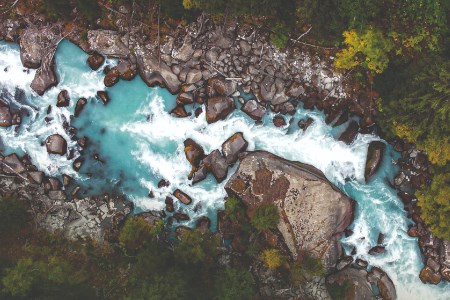The mining industry can show sustainable water management by restoring streams, wetlands, and woodlands to natural ecosystems.
Restoring a natural water system using Nature-based Solutions (NbS) provides a critical habitat for creatures living on land and in the water. It also supports the United Nations Sustainable Development Goals. Reclamation promotes biodiversity, and helps mining companies get regulatory and social approval.Historically, in the US, mine closure and water management regulations prioritised preventing erosion. Because of this, many mine water management methods included waterways made of hard armouring. The hard armour would be riprap or gabion baskets (a layered rock wall held together with metal wiring). Thankfully, today’s policies allow some erosion in stream restoration projects. This is a positive development, because erosion is a key principle of natural stream behaviour. Now, a more modern approach to mine closure and water management means restoring waterways to mimic the surrounding undisturbed areas.Components of a restored streamStream restoration does not require a major effort beyond reclamation and monitoring. The initial water treatment and grading is the same for both nature-based and traditional methods. The main difference lies in recreating a more natural ecosystem using the six components outlined below.Low-flow channelA low-flow channel is key to concentrate seasonal flow fluctuations, providing a continuous water path. This channel usually meanders through the floodplain to limit channel gradient.Riffle-pool sequenceRiffle-pool sequences create varied aquatic habitats. They have riffles on straight segments of the stream and allow for pools at the bends. Both habitat types are necessary for fish and insects to propagate. Riffle-pool sequences are also important from a structural perspective – as they provide gradient control on slopes up to 5%.FloodplainsWhen there is more water than the stream can hold, it enters the floodplain. Even higher flows may reach overflow areas above the floodplain. Planning for large influxes of water is a key component of a resilient riparian ecosystem. The greater flow area and vegetation help decrease flow velocities and limits erosion.Boulder walls or vegetated soil liftsSometimes, the site topography dictates the need for small sections of armouring along the streambank or channel, but the choices extend beyond the traditional riprap. More natural boulder walls or vegetated soil lifts can provide support, decrease erosion, and integrate with the natural landscape.Enjoyed what you’ve read so far? Read the rest of the article and the March Issue of Global Mining Review by registering today for free!
Read the article online at:
This article was published by:
Visit the original article here



